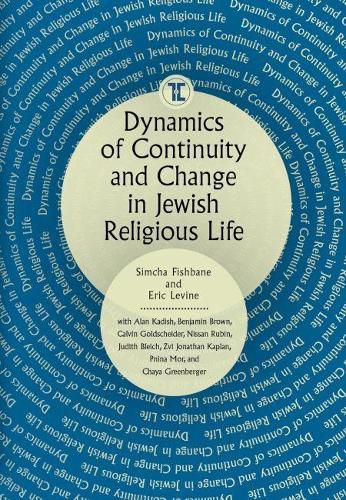Readings Newsletter
Become a Readings Member to make your shopping experience even easier.
Sign in or sign up for free!
You’re not far away from qualifying for FREE standard shipping within Australia
You’ve qualified for FREE standard shipping within Australia
The cart is loading…






This title is printed to order. This book may have been self-published. If so, we cannot guarantee the quality of the content. In the main most books will have gone through the editing process however some may not. We therefore suggest that you be aware of this before ordering this book. If in doubt check either the author or publisher’s details as we are unable to accept any returns unless they are faulty. Please contact us if you have any questions.
While the oft-quoted saying the more things change, the more they stay the same seems to aptly describe the nature of social life, the reverse may be equally accurate: the more things stay the same, the more they change. Indeed, the recognized institutions of human society, of which religion is a primary example, are both sources of stability and continuity as well as innovation and change. The dynamics of Jewish religious continuity and change are presented in this book through a group of distinguished scholars from the fields of sociology, history, medicine, religion, and Jewish studies examining key cases and themes in religious life, emphasizing illustrations of the maintenance of tradition and facing of trends pressing for transformation. This volume demonstrates the importance of case studies and historical, ideological, and philosophical surveys in understanding the actions of individual, organizational or communal actors attempting to create, maintain, or disrupt religious institutions, across geographical boundaries and time frames. This research has the potential not only to positively affect scholarly discussions, but also to generate greater understanding and dialogue among those who study Jewish life and those who work in Jewish organizations and live and function in religious communities. Indeed, the book brings a sophisticated understanding of Jewish law, religious texts, communities and institutions, of the interplay of internal and external social and ideological forces, of the impact of organizations, and of the potential for individuals and groups to shape their religious environments.
$9.00 standard shipping within Australia
FREE standard shipping within Australia for orders over $100.00
Express & International shipping calculated at checkout
This title is printed to order. This book may have been self-published. If so, we cannot guarantee the quality of the content. In the main most books will have gone through the editing process however some may not. We therefore suggest that you be aware of this before ordering this book. If in doubt check either the author or publisher’s details as we are unable to accept any returns unless they are faulty. Please contact us if you have any questions.
While the oft-quoted saying the more things change, the more they stay the same seems to aptly describe the nature of social life, the reverse may be equally accurate: the more things stay the same, the more they change. Indeed, the recognized institutions of human society, of which religion is a primary example, are both sources of stability and continuity as well as innovation and change. The dynamics of Jewish religious continuity and change are presented in this book through a group of distinguished scholars from the fields of sociology, history, medicine, religion, and Jewish studies examining key cases and themes in religious life, emphasizing illustrations of the maintenance of tradition and facing of trends pressing for transformation. This volume demonstrates the importance of case studies and historical, ideological, and philosophical surveys in understanding the actions of individual, organizational or communal actors attempting to create, maintain, or disrupt religious institutions, across geographical boundaries and time frames. This research has the potential not only to positively affect scholarly discussions, but also to generate greater understanding and dialogue among those who study Jewish life and those who work in Jewish organizations and live and function in religious communities. Indeed, the book brings a sophisticated understanding of Jewish law, religious texts, communities and institutions, of the interplay of internal and external social and ideological forces, of the impact of organizations, and of the potential for individuals and groups to shape their religious environments.